This is the true face of the ‘golden boy’ – a mysterious teenage mummy interred in lavish style with a hoard of treasures to serve him in the afterlife.
Found in Edfu, Upper Egypt, the mummy wore a golden head mask and had 49 amulets stashed around his body, including next to his penis.
And though the identity of the deceased is lost to history, a new study has revealed his face for the first time in more than 2,000 years.
Using data from a 2023 study which ‘virtually unwrapped’ the mummy via CT scanning, experts were able to rebuild his skull.
Cicero Moraes, lead author of the new study, then used a combination of techniques to recreate the mummy’s living face.
He said: ‘With the skull available, it was possible to project structures such as the nose and the limits of the soft tissue along the face.
‘In addition, I used the anatomical deformation technique.
‘This involves adjusting the head of a virtual donor to match the mummy’s skull, until the donor’s face is compatible with what the ‘golden boy’ could have had in life.
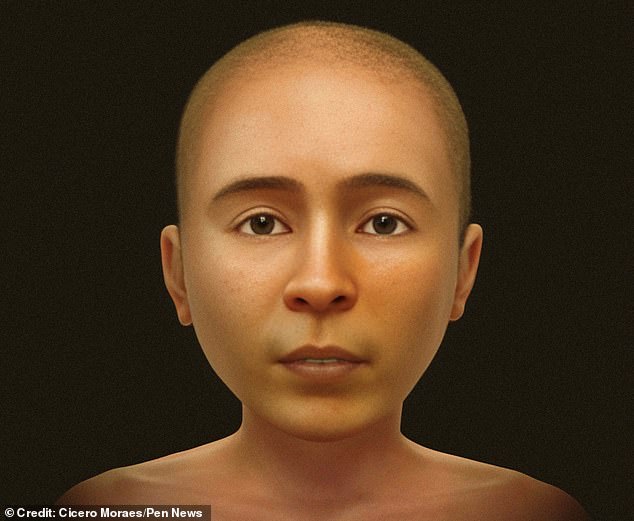
This is the true face of the ‘golden boy’ – a mysterious teenage mummy interred in lavish style with a hoard of treasures to serve him in the afterlife
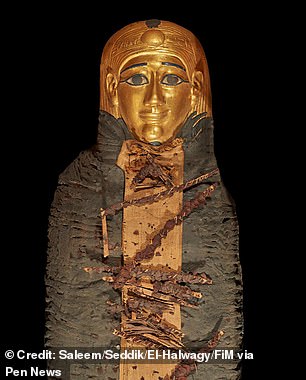
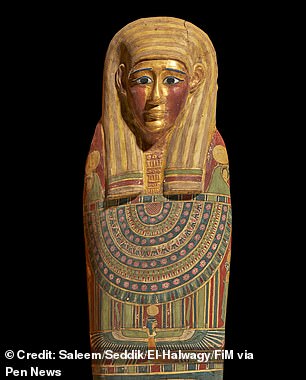
Found in Edfu, Upper Egypt, the mummy wore a golden head mask and had 49 amulets stashed around his body, including next to his penis
‘By crossing all this data, plus some statistical facial projections, it was possible to generate the final bust.’
Mr Moraes said the end result was ‘a pleasant-looking young person, with innocence still in his eyes’.
Two versions of the living face were generated.
One is objective, with eyes closed, and in greyscale to avoid making judgements about skin tone or eye colour.
Another is in colour, with eyes open, giving the teen a Mediterranean appearance.
The ‘golden boy’ was roughly 14 or 15 when he died, according to the 2023 study by Sahar Saleem, Sabah Abd el-Razek Seddik, and Mahmoud el-Halwagy.
There was no evidence of trauma or disease, and no cause of death could be determined.
He was buried in a cemetery from the Ptolemaic period, which lasted from 305 BC until 30 BC – a time when the pharaohs were of Macedonian Greek stock.
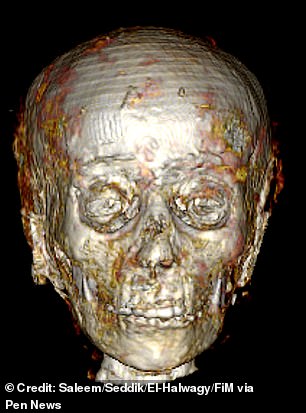
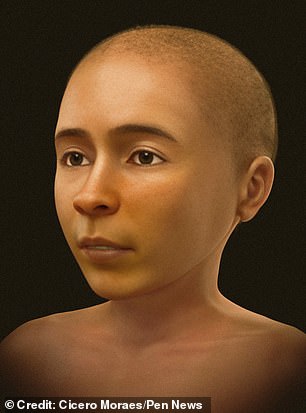
Using data from a 2023 study which ‘virtually unwrapped’ the mummy via CT scanning, experts were able to rebuild his skull. Cicero Moraes, lead author of the new study, then used a combination of techniques to recreate the mummy’s living face
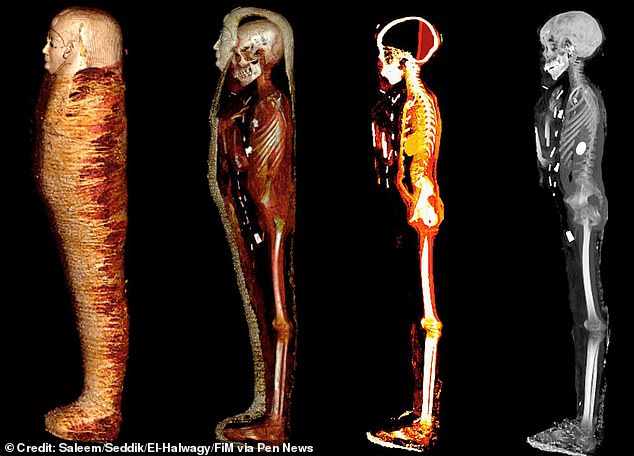
The scans reveal how amulets were placed about his person with various intentions. One in his mouth was meant to ensure he could talk in the afterlife, another besides his penis was to protect the embalming incision
The amulets were placed about his person with various intentions.
One in his mouth was meant to ensure he could talk in the afterlife, another besides his penis was to protect the embalming incision.
Others were meant to ensure his resurrection, or invoke the protection of the goddess Isis.
Gold was used to make 30 of the amulets, with the others made variously of quartz, semiprecious stones, or fired clay.
Except for the heart and the brain, the mummy’s internal organs had been removed and replaced ‘with expensive embalming materials, resin, and linen packs’.
He was buried in two wooden coffins – the outer one inscribed with Greek letters, and the inner one decorated with various drawings and a face.
The ‘lavish’ burial suggests ‘high socio-economic status’, according to the 2023 study.
Mr Moraes, a Brazilian graphics expert prolific in the field of forensic facial reconstructions, said we could be confident that the mummy’s rebuilt face was a true likeness.
He said: ‘In view of past results, in which we have even worked on police cases with identification of crime victims, the confidence is significant.
‘But we must remember that facial approximation is a technique that also presents margins of error.
‘The real face could have somewhat different detailed aspects, but the general format tends to be the one that’s presented.’
The mummy’s remains have been kept at the Egyptian Museum in Cairo since 1916.
Mr Moraes published his study in the journal OrtogOnLineMag.







